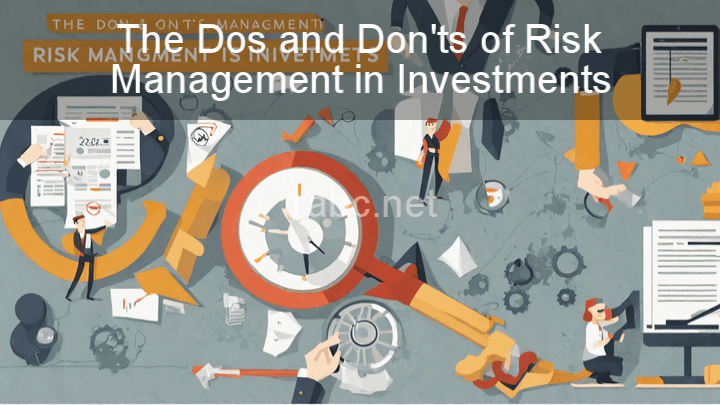The Rise of Fintech: Exploring the Impact of Money-Saving Apps

Introduction:
Have you ever wondered how money-saving apps are revolutionizing the way we manage our finances? In today's technologically advanced world, financial technology, or fintech, is playing a significant role in transforming traditional banking and empowering individuals to take control of their finances. In this blog post, we'll delve into the rise of fintech and explore the impact of money-saving apps on our personal finances.
Section 1: Understanding Fintech
Fintech refers to the use of technology to provide financial services. It encompasses a wide range of innovations that aim to make financial transactions faster, more efficient, and more accessible. One of the key drivers behind the growth of fintech is the increasing penetration of smartphones and internet connectivity, which have made financial services more accessible to a broader population.
Examples of popular fintech innovations include mobile payments, robo-advisors, and peer-to-peer lending platforms. Mobile payments have gained popularity as they allow users to make transactions conveniently and securely using their smartphones. Robo-advisors, on the other hand, leverage algorithms and artificial intelligence to provide automated investment advice, making investing more accessible to individuals who may not have the knowledge or resources to engage with traditional financial advisors. Peer-to-peer lending platforms connect borrowers and lenders directly, eliminating the need for intermediaries such as banks.
Using fintech services offers several benefits for consumers. Firstly, it allows for greater convenience and ease of access to financial services. With money-saving apps, individuals can perform transactions, manage their investments, and track their expenses anytime, anywhere. This accessibility empowers users to take control of their finances and make informed decisions.
Section 2: Exploring Money-Saving Apps
Money-saving apps are a subset of fintech applications that focus on helping individuals save money and manage their finances effectively. These apps come in various forms, such as budgeting apps, investment platforms, and cashback apps. Each type serves a specific purpose and caters to different financial needs.
Budgeting apps, for instance, help users track their income and expenses, set financial goals, and create budgets. They often provide visual representations of spending patterns and offer insights into areas where users can cut down on expenses. Investment platforms, on the other hand, allow individuals to invest their money in different asset classes, such as stocks, bonds, or cryptocurrencies. These platforms typically offer user-friendly interfaces and educational resources to empower users to make informed investment decisions. Cashback apps reward users with cash or other benefits for making purchases through their platforms, encouraging users to save money while shopping.
These money-saving apps work by leveraging technology to automate financial tasks, provide personalized recommendations, and simplify complex financial processes. For example, budgeting apps can connect to users' bank accounts and credit cards to automatically track transactions and categorize expenses. This automation reduces the manual effort required to manage finances and provides users with a real-time snapshot of their financial health.
Section 3: The Impact on Personal Finances
Money-saving apps have had a profound impact on personal finances, empowering individuals to make better financial decisions and improve their financial well-being. These apps offer features that improve financial literacy and awareness, such as expense tracking and goal setting. By visualizing their spending habits, users can identify areas where they may be overspending and make adjustments to their budgets accordingly. Goal-setting features help users prioritize their financial objectives, whether it's saving for a down payment on a house, paying off debt, or building an emergency fund.
Furthermore, money-saving apps enhance budgeting capabilities by providing real-time insights into spending habits. Users can set spending limits for different categories and receive notifications when they are approaching or exceeding their budgets. This real-time feedback helps users stay on track with their financial goals and develop healthier spending habits.
Another significant impact of money-saving apps is the potential for higher returns through automated investing and micro-investing options. Robo-advisors and investment platforms provide users with access to diversified portfolios and investment strategies that were once only available to high-net-worth individuals. Through automated investing, users can contribute regular amounts to their portfolios, taking advantage of dollar-cost averaging and the power of compounding. Micro-investing apps allow individuals to invest small amounts of money and gradually build their investment portfolios over time.
Section 4: Challenges and Considerations
While money-saving apps offer numerous benefits, it's essential to address some concerns and considerations associated with their usage. One of the primary concerns is data security and privacy. Money-saving apps often require users to link their bank accounts and provide access to their financial information. It's crucial to choose trustworthy and reliable apps that prioritize data protection and encryption. Reading user reviews, researching the company's security measures, and understanding how the app handles and stores personal information can help mitigate these concerns.
Another potential risk associated with money-saving apps is over-reliance on technology. While these apps provide valuable tools and insights, it's essential for individuals to maintain a holistic approach to managing their finances. Personal finance is not solely about numbers; it's about understanding individual goals, values, and aspirations. Money-saving apps should be seen as tools to support financial decision-making, but users should also consider seeking professional advice and engaging in financial education.
When selecting money-saving apps, it's crucial to consider factors such as functionality, user experience, customer reviews, and the company's reputation. Reading app reviews and comparing features can help individuals find apps that align with their financial goals and preferences.
Conclusion:
The rise of fintech and the availability of money-saving apps have revolutionized the way we manage our personal finances. These apps offer convenience, automation, and personalized recommendations that empower individuals to take control of their financial well-being. By leveraging technology, users can improve their financial literacy, enhance their budgeting capabilities, and explore investment opportunities that were once exclusive to a select few. However, it's essential to consider data security and privacy concerns and maintain a balanced approach to financial management. So, do your research, choose wisely, and embark on your journey towards a healthier financial future. Remember, always do your research before choosing a money-saving app that suits your needs. Happy saving!
FREQUENTLY ASKED QUESTIONS
What is The Rise of Fintech: Exploring the Impact of Money-Saving Apps about?
"The Rise of Fintech: Exploring the Impact of Money-Saving Apps" is a comprehensive article that delves into the emergence of financial technology, commonly known as fintech, and the significant impact it has had on the way we manage our money. The content provides a detailed exploration of money-saving apps, which are a popular and convenient tool for individuals seeking to improve their financial well-being.The article begins by highlighting the rapid growth of the fintech industry and how it has revolutionized traditional banking and financial services. It goes on to explain how money-saving apps, such as budgeting apps, investment apps, and peer-to-peer payment platforms, have gained popularity due to their user-friendly interfaces and ability to offer personalized financial solutions.
Furthermore, the article explores the positive impact of money-saving apps on individuals' financial habits. It discusses how these apps can help users track their expenses, set savings goals, and even invest their money wisely, all within the convenience of their smartphones. The content also emphasizes the potential for these apps to promote financial literacy and empower individuals to take control of their finances.
In addition to the benefits, the article also touches upon some potential concerns surrounding the rise of fintech and money-saving apps. It discusses issues such as data privacy and security, as well as the potential for overspending or relying too heavily on technology for financial decision-making.
Overall, "The Rise of Fintech: Exploring the Impact of Money-Saving Apps" provides an insightful and informative overview of the fintech industry and its influence on our financial landscape. Whether you're curious about the latest financial technology trends or looking to optimize your financial management, this article offers valuable insights and analysis.
Who should read The Rise of Fintech: Exploring the Impact of Money-Saving Apps?
The Rise of Fintech: Exploring the Impact of Money-Saving Apps is a book that would be beneficial for a wide range of individuals. It is particularly relevant for those who are interested in understanding the evolving landscape of financial technology and its impact on our lives.If you are someone who is curious about how money-saving apps have revolutionized the way we manage our finances, this book is for you. Whether you are a tech-savvy individual looking to explore the latest trends in fintech or a business professional wanting to stay informed about the changing financial industry, this book provides valuable insights.
Young professionals who are just starting their financial journey and are looking for effective ways to save and invest can also benefit from reading this book. It offers practical tips and strategies for optimizing the use of money-saving apps to achieve financial goals.
Furthermore, if you are a consumer who is interested in learning about the potential risks and challenges associated with money-saving apps, this book explores the ethical, security, and privacy considerations. It provides a balanced perspective on the pros and cons of fintech, helping readers make informed decisions.
Overall, The Rise of Fintech: Exploring the Impact of Money-Saving Apps is a must-read for anyone seeking to gain a comprehensive understanding of the fintech industry and its implications. So, whether you are a tech enthusiast, a finance professional, or simply someone interested in the future of financial technology, this book is definitely worth your time.
What topics are covered in the book?
The book covers a wide range of topics, including but not limited to personal development, relationships, career growth, health and wellness, and mindfulness. It delves into the art of communication, effective goal-setting, managing stress, building self-confidence, and nurturing healthy habits. Additionally, it explores strategies for achieving work-life balance, fostering positive relationships, and overcoming obstacles. The book also offers insights on financial management, time management, and cultivating a positive mindset. Overall, it provides a comprehensive guide to empower individuals in various aspects of their lives.
Are there any practical tips or advice in the book?
Yes, the book offers several practical tips and advice that can be applied in real-life situations. It provides actionable strategies and techniques to help you navigate various challenges and achieve your goals. Whether it's advice on improving communication skills, managing time effectively, or cultivating a positive mindset, the book offers practical insights that you can implement in your daily life. These tips are presented in a clear and concise manner, making it easy for readers to understand and apply them. So, if you're looking for practical guidance, this book has got you covered!

